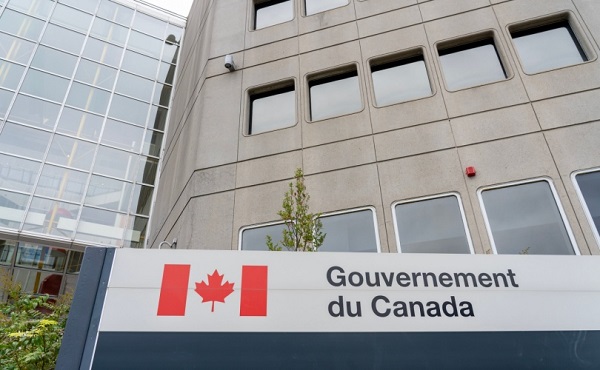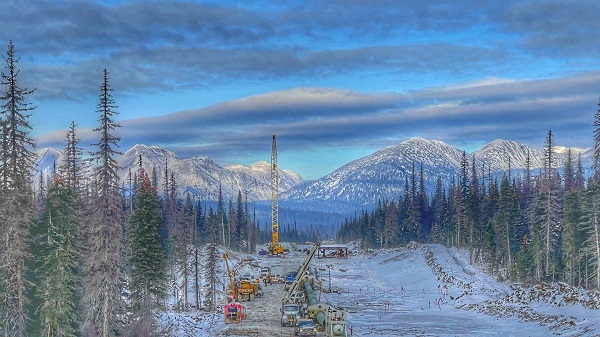Construction
SNC-Lavalin CEO sick of being used as a ‘puck in a political hockey game’

MONTREAL — Amid an ongoing scandal that has rocked the Liberal government in Ottawa, the head of SNC-Lavalin Group Inc. said he’s tired of seeing his employees “used as a puck in a political hockey game.”
“Frankly, they don’t deserve it. And we’ve had enough,” chief executive Neil Bruce said Friday after slashing the company’s dividend and reporting its biggest quarterly losses in at least two decades.
The beleaguered engineering and construction giant has been in the eye of a firestorm that erupted earlier this month when the Globe and Mail reported the Prime Minister’s Office pressured former attorney general Jody Wilson-Raybould to steer prosecutors toward negotiations with the company.
The company was looking to negotiate a deferred prosecution agreement in connection with fraud and bribery charges linked to business dealings with Moammar Gadhafi’s now-toppled regime in Libya.
Bruce said he wasn’t holding out much hope for a remediation agreement, which would allow SNC-Lavalin to avoid a criminal trial in exchange for fines and other penalties.
“That’s certainly at their discretion,” he said. “But frankly, it doesn’t look like that today.”
SNC-Lavalin chopped its dividend by 65 per cent Friday as it reported a fourth-quarter loss of $1.6 billion.
It will now pay a quarterly dividend of 10 cents per share compared with its earlier payment of 28.7 cents per share.
Bruce said problems at a mining project in Chile were “incredibly disappointing,” noting the company’s mining and metallurgy and oil and gas segments had underperformed, prompting a pair of profit warnings earlier this year.
Ongoing diplomatic tensions between Canada and Saudi Arabia have jeopardized future contracts in the Middle Eastern kingdom, Bruce said last month after announcing a $1.24-billion impairment charge related to SNC-Lavalin’s oil and gas business.
The Jan. 28 announcement, combined with news about delays at the Chilean mining project and an arbitration loss in Australia, sent shares plummeting 27 per cent to close at $35.01, their lowest since September 2012.
Analyst Derek Spronck of RBC Dominion Securities advised investors to “keep calm and carry on.”
“There remain lots of challenges ahead for SNC, but none of which we would view as insurmountable and more than reflected in the current share price,” he said in a research note Friday.
A criminal case could result in a ban of up to 10 years on bidding on federal contracts.
Bruce noted that until a conviction comes down, the company faces no bidding restrictions in Canada.
“Basically, they don’t penalize you until you’re found guilty.”
“This overhang continues to be there,” he added, “and competitors in the U.S….use that against us.”
Analysts pointed to a potential sale of some of the company’s 16.77 per cent stake in Ontario’s 407 ETR highway in 2019. The company has been mulling a partial sale for at least six months, which would hand it a slice of the $2.2 billion some analysts say the stake is worth.
The Montreal-based company’s loss for its fourth quarter amounted to $9.11 per diluted share. That compared with a profit of $52.4 million or 30 cents per diluted share in the fourth quarter of 2017.
Revenue totalled $2.56 billion, down from $2.92 billion.
On an adjusted basis, SNC reported a loss of $1.31 per diluted share compared with an adjusted profit of 98 cents per diluted share a year ago.
Analysts on average had expected a loss of $1.19 per diluted share, according to Thomson Reuters Eikon.
Companies in this story: (TSX:SNC)
The Canadian Press
Community
The federal government just did the bare minimum to improve intergovernmental coordination on housing

From the MacDonald Laurier Institute
By Josef Filipowicz and Steve Lafleur
On balance, the federal government shows little interest in tying the demand side of Canada’s housing equation to the supply side
Housing policy is typically thought of as a local government issue. After all, municipalities largely control the number and types of dwellings ultimately allowed to be built across Canada. They also, generally speaking, have the most control over the supply side of the housing market of any order of government – and supply hasn’t been doing too well for decades now.
If there’s one area of housing policy where municipalities can be excused, it’s in their (in)ability to project housing demand. The blame for that lies with the federal government. Let us explain.
Housing demand – that is, the number and types of dwellings desired in Canada – is the result of factors like incomes, credit, and, probably most importantly, population growth. Municipalities, in their defence, control none of these.
Incomes are determined by market factors (and, to an extent, by federal and provincial taxation), while the strongest credit levers lie with the Bank of Canada or other national entities. Population growth, for its part, is no longer primarily driven by births and deaths. Canada-wide, it is almost exclusively determined by federal immigration policy. To wit, Statistics Canada reported that roughly 98% of the growth in the Canadian population from July 1, 2022, to July 1, 2023, came from net international migration, with 2% coming from the difference between births and deaths.
In other words, local governments have the strongest levers affecting the supply of housing, while the federal government has the strongest levers affecting the demand for housing.
But, as we discussed in a recent report for the Macdonald Laurier Institute, the three levels of government (federal, provincial, and municipal) don’t coordinate all that much when it comes to housing. The decisions guiding population growth, such as medium-term immigration targets, immigration eligibility criteria, and temporary residency policies, don’t take critical factors like the number of homes available across Canada into account. In fact, at the time of our report’s publication, in March 2023, none of the federal-provincial agreements that guide immigration planning even mentioned the word “housing.” Adjacent terms, such as access to settlement “services,” “activities,” or “requirements” are mentioned, implying a possible link, but none explicitly mention the need for a quantitatively or qualitatively adequate housing supply.
Meanwhile, the processes local governments use to guide future growth, including infrastructure needs (e.g., sewers, roads, water, schools) and zoning bylaws, don’t reflect the magnitude of housing demand. For example, the Growth Plan for the Greater Golden Horseshoe, which guides how cities in Canada’s largest urban area (anchored by Toronto) should grow over the long term, was first drawn up in 2006 and wasn’t updated until 2019/2020. This means that any changes to population projections occurring after the plan’s enactment were not taken into account when planning for the many homes needed to accommodate a growing population.
So why is this a problem?
Canada’s population growth has reached historic levels. 2022 was the first year where Canada grew by more than one million people, and 2023 appears to be on track for similarly high growth. This level of growth was not anticipated in the population projections that inform local growth plans. In fact, the Ontario government’s own set of 10-year growth targets on larger cities, imposed in 2022 in an attempt to short circuit lagging local projections, are already largely obsolete. Why? Because the federal decisions determining growth can change from year to year – and in recent years the feds have consistently augmented the number of permanent and temporary migrants coming to Canada. Put another way, the population estimate goalposts appear to move further out every year, preventing local governments devising adequate plans on how to reach them.
The picture here is bleak, as any efforts to adequately house a growing Canadian public quickly become obsolete. Local governments undertaking years of preparation and public consultation to enact their growth plans might even find themselves in a situation where their projections are outdated before the ink even dries. This must be deflating, as it undermines the entire process by which Canadian communities do their best to grow at a steady pace while balancing the interests of many stakeholders.
Is there any good news?
The short answer is ‘yes.’ The federal government appears to have acknowledged the mounting chorus of commentary criticizing its lack of consideration of basic elements such as housing needs and capacity when setting medium-term immigration targets. The latest targets, announced on November 1, 2023, hold the annual number of permanent residents steady at 500,000 per year starting in 2026, while also committing to “take action over the next year to recalibrate the number of temporary resident admissions to ensure this aspect of our immigration system also remains sustainable.”
Immigration, Refugees and Citizenship Canada – the ministry responsible for setting targets and eligibility – also released a report outlining some planned changes to immigration policy. Notably, the report includes a section dedicated to the development of “a comprehensive and coordinated growth plan,” including a commitment to “Seek to integrate housing and health care planning, along with other important services, into planning Canada’s immigration levels.” Somewhat more specifically, it commits the Ottawa to “explor[ing] options to develop a more integrated plan to coordinate housing, health care and infrastructure between federal government departments, and in close collaboration with provinces, territories and municipalities.”
But that’s about it. No specifics on local housing capacity, or on predictable numbers of non-permanent residents, both of which are necessary to ensure balanced growth. Unfortunately for local governments trying to adequately plan for growth, it looks like they’ll have to wait and see as the federal government determines whether and how it might make Canada’s rate of population growth more predictable.
So what can be done?
The federal government appears reluctant to meaningfully diverge from its traditional approach to immigration policy in the near term. However, a greater willingness to engage with other levels of government is a positive development. Local and provincial governments are well placed to determine their capacity to plan for and build housing, as well as other necessary infrastructure to support growth. Further, they already have a role in drafting the agreements that guide medium-term immigration plans. They should make the most of this opportunity by ensuring that all departments and ministries directly involved with the delivery of infrastructure and housing play a direct, leading role in drafting input guiding immigration policy. Specifically, their input should include hard estimates of communities’ capacity to increase housing and infrastructure development, helping frame future immigration targets, criteria, and strategies.
On balance, the federal government is still showing little interest in tying the demand side of Canada’s housing equation to the supply side. Nevertheless, its recent changes to immigration policy offer a sliver of hope to local governments struggling to anticipate future growth needs. Provinces and municipalities should make the most of this opportunity, helping bring both sides of the housing equation a little closer to one another.
Josef Filipowicz is an independent policy specialist focusing on urban land-use issues including housing affordability, taxation and municipal finance.
Steve Lafleur is a public policy analyst who researches and writes for Canadian think tanks.
Alberta
Premier Jason Kenney shares photos of the Keystone XL pipeline crossing the Canada US border.

Alberta Premier Jason Kenney announces that shovels are in the ground in Alberta, Saskatchewan and parts of the United States on the Keystone XL pipeline expansion.
On Saturday, the day after Alberta premier announced at a press release that after the province made a $1.1 billion dollar equity investment in the Keystone XL pipeline, that shovels were already in the ground. Jason Kenney shared pictures on social media pictures of the pipeline crossing into the United States along the Saskatchewan border.

Keystone XL pipeline construction shows progress as it crosses the border into the United States from Saskatchewan
A long with the initial investment to get the pipeline project going again, the province will also provide an additional $4.2 billion in loan guarantees to help developer TC Energy start construction immediately. Kenney has said that the government had been negotiating with the company for months, and that no private sector bidders were ready to finance the project at this time. “In other words,” Kenney has said, “without this investment by Alberta, the pipeline would not be built.”
The project when completed, “in the spring or summer of 2023 will connect Canada’s oil sands with refineries in the United States. The pipeline is critical to the long-term future of Alberta’s oil industry, which has maxed out its capacity to bring oil to foreign markets using rail. Cars and existing pipelines. The Keystone XL pipeline will carry 830,000 barrels per day south from Alberta to a number of locations in the states.
Aside from announcing that, “construction is well under way” Kenney also added, “Our historic investment in getting a major pipeline built, creating good, high paying jobs – one of the reasons was to get work moving now in this construction season and throughout 2020.”
Alberta faces a long road to an economic recovery once the country can get past the Covid- 19 pandemic, Kenney is staying positive, “This investment will create 7,000 jobs, directly and indirectly here in Alberta this year alone. We believe that Alberta’s government will receive back at least 30 billion dollars in additional royalties and other revenues because of the additional shipments that Keystone XL will make possible.”
-

 Business2 days ago
Business2 days agoPepsiCo joins growing list of companies tweaking DEI policies
-

 Business2 days ago
Business2 days agoDOJ drops Biden-era discrimination lawsuit against Elon Musk’s SpaceX
-

 Business2 days ago
Business2 days agoWorst kept secret—red tape strangling Canada’s economy
-

 Daily Caller1 day ago
Daily Caller1 day agoKash Patel First Statement As FBI Director, Tells Media ‘Bring It On’
-

 Indigenous2 days ago
Indigenous2 days agoTrudeau gov’t to halt funds for ‘unmarked graves’ search after millions spent, no bodies found
-

 Business2 days ago
Business2 days agoApple removes security feature in UK after gov’t demands access to user data worldwide
-

 Daily Caller1 day ago
Daily Caller1 day agoNEWT GINGRICH: Europe’s Elites Were Finally Told To Take A Look In The Mirror
-

 COVID-192 days ago
COVID-192 days agoFreedom Convoy’s Tamara Lich shares heartfelt letter from children: ‘God will be by your side’









